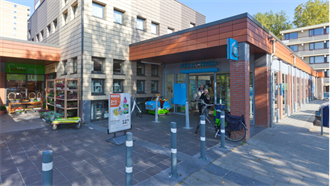Berlin is perhaps the most interesting test case and example in Europe of a city that is growing, transforming itself and attracting increasing amounts of capital while seeking to control the process and remaining an affordable place for young people to live.
The German capital was singled out by panellists at the PropertyEU Cities of Influence briefing, which was held at Mipim in Cannes.
The event heard that many different factors contribute to the making of a city of influence. A new Colliers International study of 50 Cities of influence (Coi) in Europe, presented at the briefing, takes into account eight relevant categories, from fresh talent linked to good universities to future employment opportunities, from economic output to quality of life to country risk.
City league
The overall score sees London in first place, followed by Paris and Madrid. ‘The first three cities correlate perfectly with the investment rank in 2017, they rank highest in our survey and also attracted the most capital from investors,’ said Damian Harrington, director, head of EMEA research, Colliers International. ‘Then the correlation stops, and other smaller cities that rank high in the Coi list actually received very little investment last year. We think it is a pointer to the future.’
Investors take note, then: Birmingham, for example, came 5th in the Coi rankings but is 14th in the list of investment recipients; for Edinburgh the discrepancy is even more glaring, as it is 7th in the Coi rankings but 45th when it comes to investment. Other examples are Zurich, respectively 8th and 28th, and Milan, 9th and 15th.
The discrepancy also works the other way round. The German cities, for example, last year received a lot of investment but their Coi rankings were lower. Frankfurt was 14th but 5th in Europe when it comes to investment flows, Berlin was 18th in the list of cities of influence but 4th in attracting capital, Hamburg was 21st in the Coi rankings but a healthy 9th in the investment list.
Berlin still dominated by public sector
Berlin’s ranking in the Coi list is a surprise, said Harrington: 'The reason why it is so low is because it is still dominated by the public sector, so it ranks low in the dynamic economy charts. However, it has a growing tech sector so things are changing fast.'
Panellists agreed that Berlin is on an upward trajectory because it has so much going for it. Its success in attracting start-ups and young talent has led to rental growth but the city is still affordable, said Uwe Rempis, managing director, KVG Munchen, LaSalle Investment Management: ‘Predicted rental growth in the office sector is 6% over the next few years but rents are still modest so they have room to grow and, crucially, residential is still affordable.’
That is a key factor in attracting young people, said Richard Divall, head of cross-border capital markets, EMEA, Colliers International: ‘Berlin is still affordable and that is why it is winning. It now has 5.3 mln inhabitants and it is fast becoming the third-biggest city in Europe after London and Paris and the dynamic, multi-cultural, tech centre of Germany.’
Winning combination
The combination of affordable housing, the availability of jobs and a good vibe is leading young people to choose to live there, said Hannah Corlett, founder and director of Assemblage: ‘All the people who work remotely for us live in Berlin precisely for those reasons.’
Local government intervention can make a big difference. ‘Berlin actively introduced strategies to avoid gentrification,’ Corlett said. ‘It was a policy-driven move to restrict house rentals, ensure there was a constant supply and that talent would remain in situ rather than being pushed out by high prices, which is what happened in London.’


































